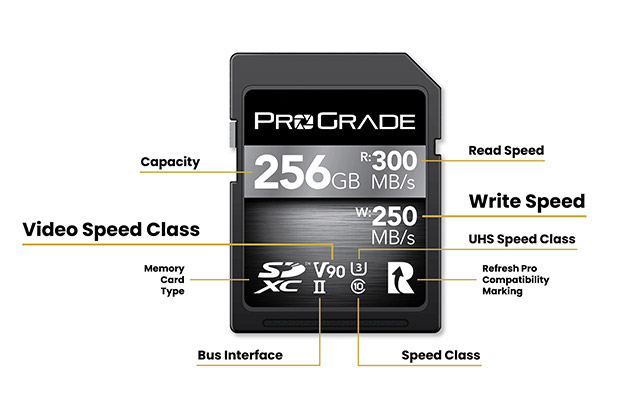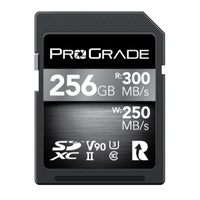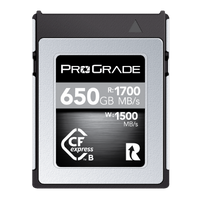Every digital camera uses memory cards for storing your videos. Choosing the right one, however, can sometimes be overwhelming. After all, it is an important decision. This straightforward three-step guide is designed to help you find the best memory card for your specific use case.
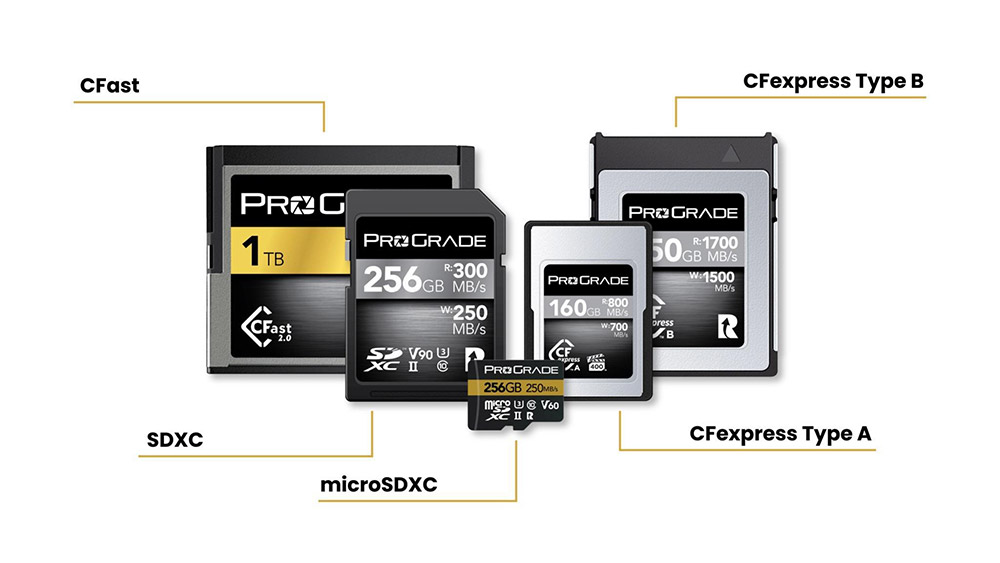
1. Compatibility. Compatibility. Compatibility.
Memory cards come in various shapes and sizes, and different cameras use different memory cards. Hence, before all else, you have to know what type of memory cards are compatible with your camera. You can usually find this information in the user’s manual or on the manufacturer’s website.
Additionally, you can check our free compatibility charts to find the right card for your camera. These charts cover all the popular cameras and their compatible cards. Besides, we’ve also clearly marked which cards are recommended for best performance and highest resolution video recording.
What if my camera supports multiple cards?
Some higher-end DSLR and mirrorless cameras support multiple cards, making the decision a bit more complicated. For example, the Sony a7S III supports SDXC and CFexpress Type-A cards. In situations like this, it is generally recommended to pick the type with faster write speed, which, in this case, is Cfexpress Type-A. Your camera usually supports this faster card for a good reason (more about that below).
SD, SDHC, or SDXC?
Since SD cards are backward compatible, your camera’s manual may indicate it supports all of them: SD (Secure Digital), SDHC (high capacity), and SDXC (extended capacity).
We strongly recommend serious videographers avoid cards that are labeled SD or SDHC. SD cards have a maximum capacity of 2GB, which is too low even for today’s minimum video standards. SDHC cards do have a higher capacity, but they use the FAT32 file system and will split your longer movies into 4GB chunks because of that. Meanwhile, SDXC cards that utilize the exFAT file system have no such limitations.
At the same time, it’s important to remember that SD cards are not forward compatible. Meaning, SDXC compatible cameras can use SDHC cards but not the other way around. So don’t throw all the SD cards into one pot because they have the same form factor. Instead, make sure your camera actually supports SDXC cards before you buy one.
Similarly, CFast cards are relatively easy to mistake for CF cards. Keep in mind that those two are entirely different, despite being physically interchangeable. They have the same size and shape but completely different connectors.
Once you’ve taken note of what type of cards you are able to pick from, you’ll want to think about what kind of videos you will be shooting. Different tasks have different demands for speed and capacity.
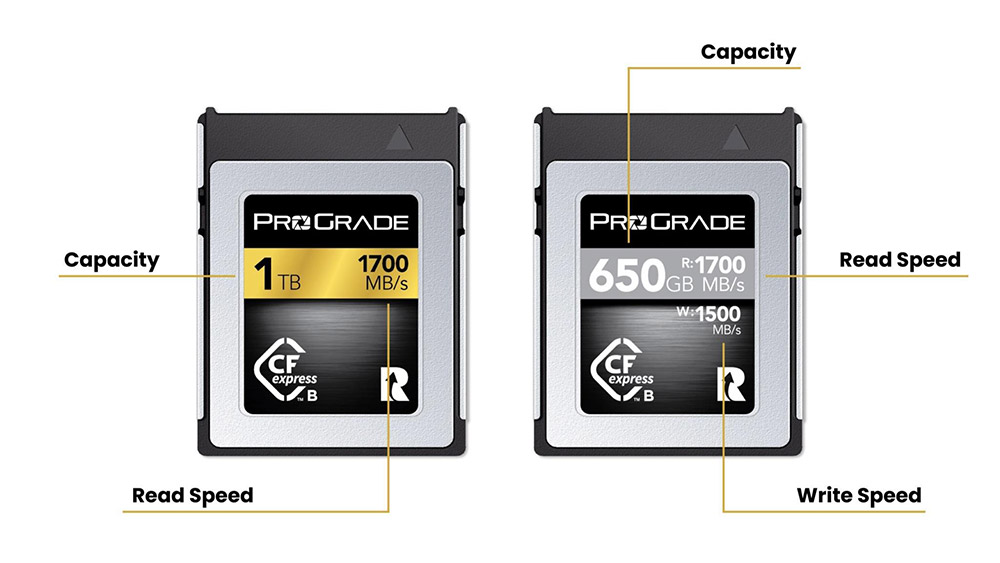
2. Consider speed before capacity and minimum sequential write speed before maximum write speed.
It is natural to think that capacity is the first concern whenever choosing a memory card. In reality, it should almost always be the speed. Specifically, write speed.
Write speed determines how fast data can be saved on the memory card. This is especially critical when dealing with higher-resolution videos. If the memory card is too slow and unable to adequately handle the incoming data during recording, it may start dropping frames or store the video in lower than expected quality. In worst-case scenarios, your camera may stop recording altogether.
Minimum Sequential Write Speed
If not stated otherwise by the manufacturer, the write speed marked on a memory card usually does not indicate the minimum sequential write speed but the maximum a card can reach. Even though paramount, you should not be basing your purchase decision solely on the maximum write speed.
Recording videos means you’ll be continuously writing data on the card. For that reason, a memory card must foremost be reliable and capable of sustaining a certain minimum write speed instead of peaking in astronomical heights every now and then. An SDXC card with a maximum write speed of 200MB/s is completely useless for shooting 4K videos when it’s unable to sustain a minimum write speed of 30MB/s.
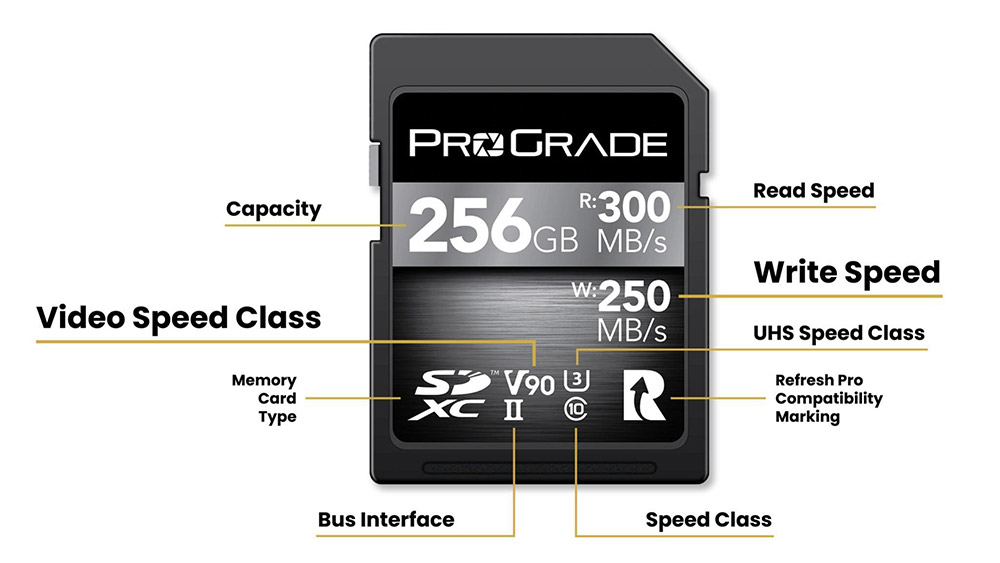
How to determine the minimum sequential write speed of SD, SDHC, or SDXC cards?
The highest minimum write speed any SD card can sustain is determined by the highest Speed Class marking on the card. Symbols of the Speed Class, UHS Speed Class, and Video Speed Class (with a corresponding number) indicate a specific speed at which your camera or any other device can write data on the card consistently. The higher the rating, the more data you can write to the card in the same amount of time.
As seen in the picture above, the so-called original Speed Class is denoted with a number inside the symbol “C.” The UHS (Ultra-High Speed) Speed Class is characterized by the number inside the symbol “U.” And the Video Speed Class is marked on the card with a letter “V” followed by a number. The letter “V” stands for video, and the number indicates the minimum sustained write speed in MB/s. Meaning that the minimum write speed of the V90 card will never drop below 90 MB/s.
One SDXC card can be certified in every speed class. It is so because there is a lot of overlap between the classifications. For example, Speed Class rating C10, Ultra-High Speed Class rating U1, and Video Speed Class rating V10 each refer to a memory card that has a minimum sequential write speed of 10MB/s. Similarly, a V60 card with a minimum sequential write speed of 60MB/s is pretty much automatically handed the Speed Class C10 (10MB/s) and UHS Speed Class U3 (30MB/s) rating as well.
For that reason, whenever looking for an SDXC memory card for video recording, you can pretty much just focus on the Video Speed Class and ignore the rest. The following chart helps to navigate the speed classes easier.
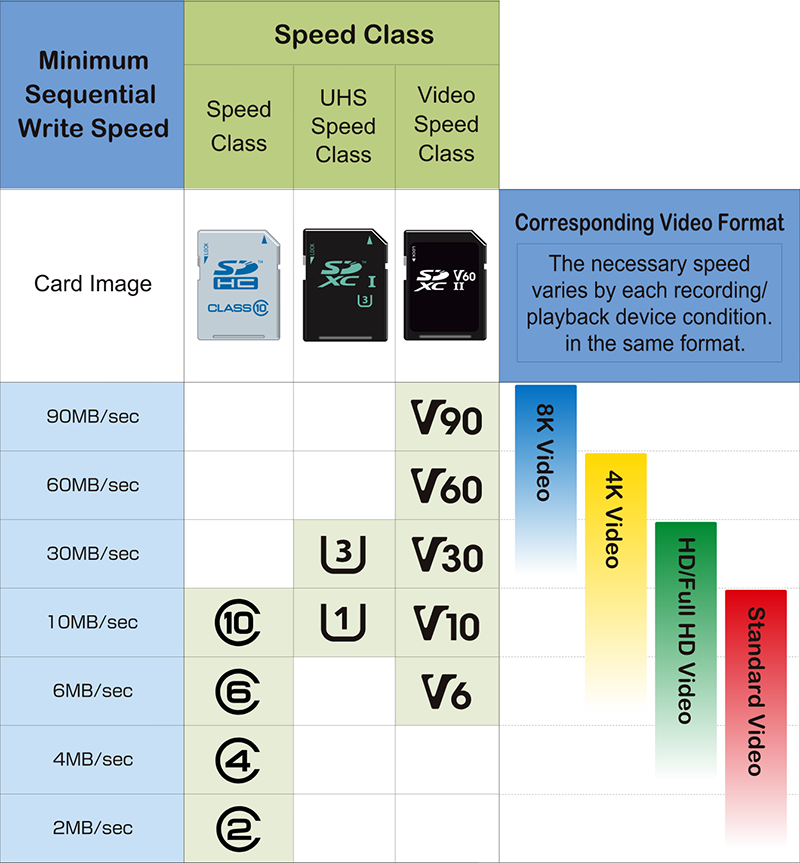
How to determine the minimum sequential write speed of CFexpress and CFast memory cards?
CFexpress or CFast memory cards have the Video Performance Guarantee (VPG) speed. It’s shown by the number inside a clapper icon. The principle is similar to the Video Speed Class markings on SDXC cards. The number indicates the minimum sequential write speed in MB/s.
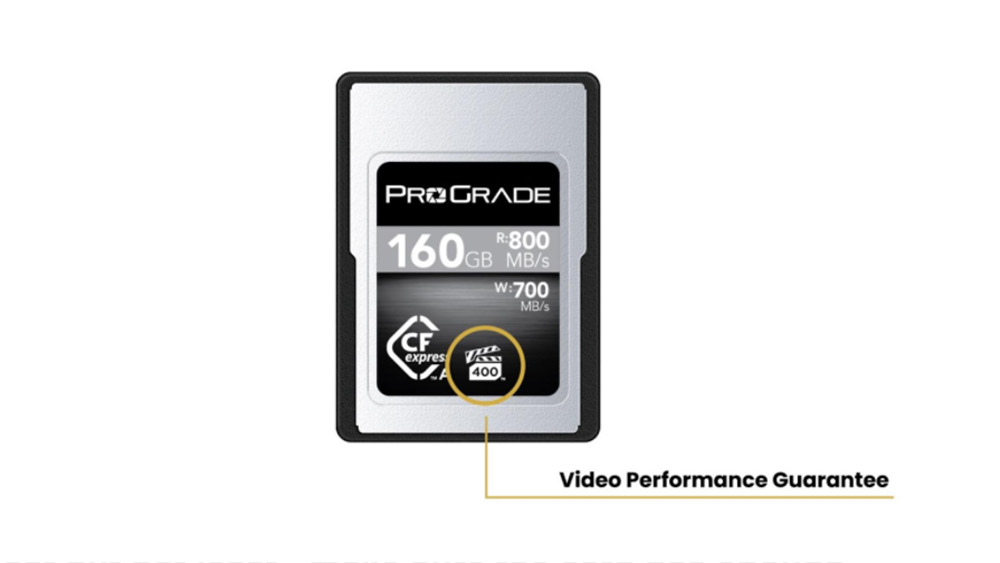
If a CFexpress or CFast memory cards card does not have the VPG marking, turn to the manufacturer for more information.
How do you choose the memory card with the right speed for your specific use case?
For shooting full HD or 4K videos with lower bitrates and lower frame rates, a V30 memory card might be enough. If you’re shooting 4K video at higher bitrates and higher frame rates (60-240fps), you will need a faster V60 card. For the best performance and resolutions above 4K, choose the SDXC UHS-II cards with a V90 rating.
As mentioned before, if you are one of the lucky ones whose camera supports the CFexpress Type A cards alongside the SDXC cards, go with these. They not only ensure you get the maximum out of your camera, but they are also the most future-proof option, as more and more camera manufacturers adopt the format.
When to consider memory card read speeds?
Read speed determines how quickly you can retrieve recorded videos from the memory card. It does not affect the video quality nor can it hinder your camera’s performance, but it does affect the workflow.
A faster read speed decreases your wait time by allowing you to transfer data from the card to your computer faster. That means you can get to editing and sharing your work a lot quicker. Faster read speeds are critical for projects with short deadlines requiring quick turnovers.
Cards that have faster write speeds usually also have faster read speeds.
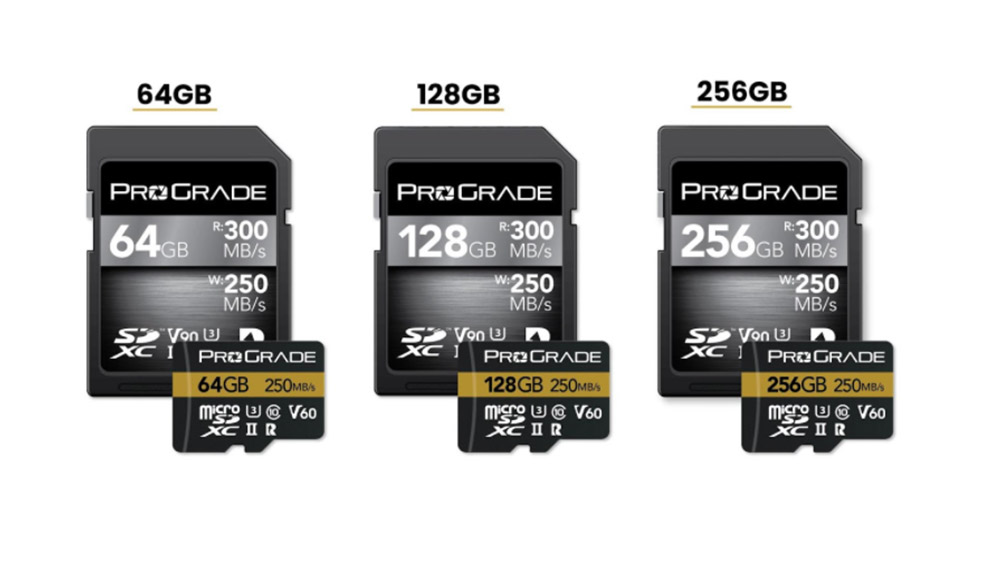
3. Last but not least – make sure the card has enough capacity so that you don’t run out of space.
Needless to say, every memory card can record only a certain amount of data. This amount is shown on the front of the card in gigabytes (GB) or terabytes (TB). As you probably know, the larger the card’s capacity, the more media it can hold.
Video bitrate, frame rate, length, and format each affect the size of your video files. For instance, a single minute of 1080p video may take only around 130MB of space. At the same time, one minute of ProRes 4K video at 880 Mbits/s will consume roughly 5.3GB. That works out to 318GB every hour. A lot, to say the least. You definitely want to use higher-capacity cards if you are recording at such high data rates.
However, even a lower bitrate 4K video can easily consume north of 45GB per hour. The same goes for higher resolution 1080p files. A 1080p video at 120fps and 4K at 60fps will generate almost identical file sizes when shot with the matching bitrate. So consider at least 128GB cards unless you are shooting way below an hour, and there’s absolutely no risk of running out of space.
In conclusion:
When it comes to stocking up memory cards for video recording, it is critical to choose wisely. There are close to quadrillion memory cards out there and not all of them can meet the demands of modern cameras and your workflow.
Always follow the guidelines given by the manufacturer of your camera and always consider speed before the capacity. Keep in mind that slower cards that are unable to sustain certain write speeds can cause recordings to fail and are highly likely to create bottlenecks in your workflow. There’s nothing more annoying than having to reshoot scenes because your memory card can’t keep up with you or your camera and keeps constantly failing.
Professional-Grade Memory Cards
If the safety of your data, uninterrupted workflow, and creative freedom are all mission-critical to you, consider ProGrade Digital memory cards.
We manufacture a wide range of memory cards and accompanying accessories, all created specifically for professional cinematographers and photographers. Plus, all our memory cards with the “R” Refresh Pro logo on the label are compatible with our one-of-a-kind Refresh Pro™ software, enabling you to check your card’s health and refresh it back to factory-new condition. Even after years of use.
Still undecided or need more help?
Our friendly staff is just one click away and always ready to answer your questions and assist you with choosing the best memory cards for your specific use case.
